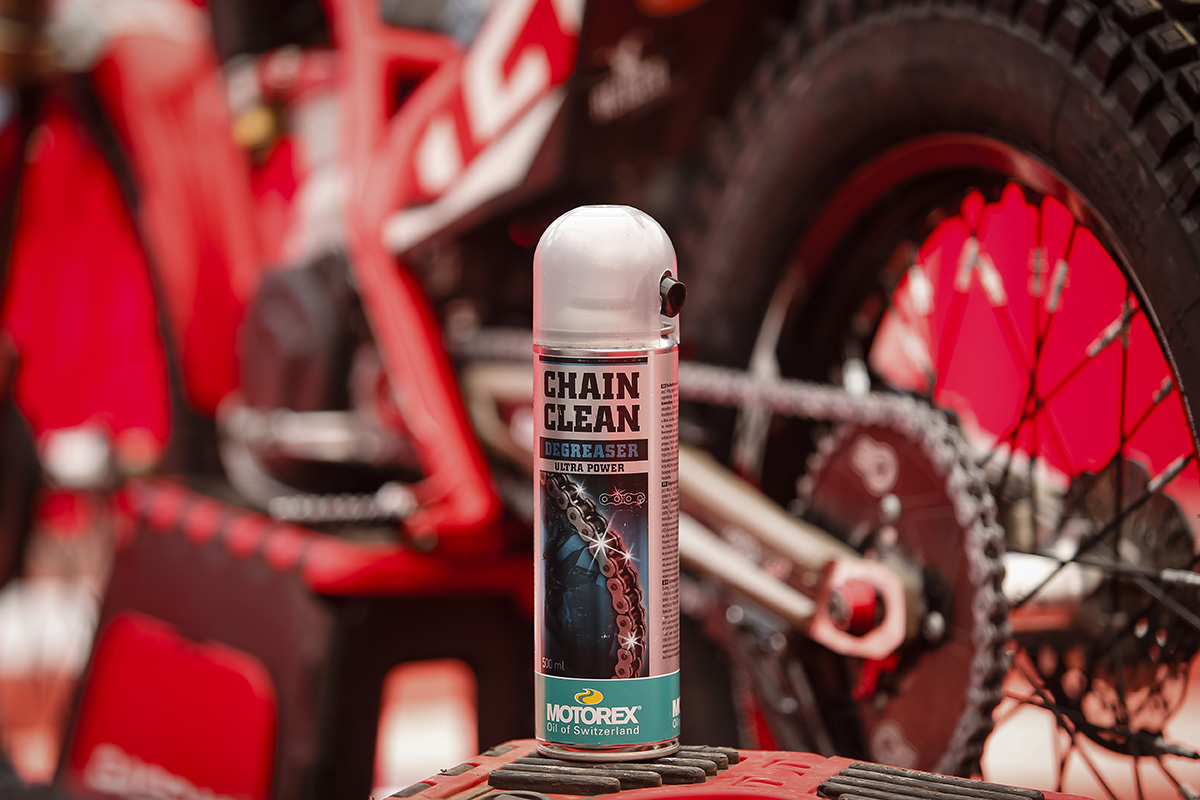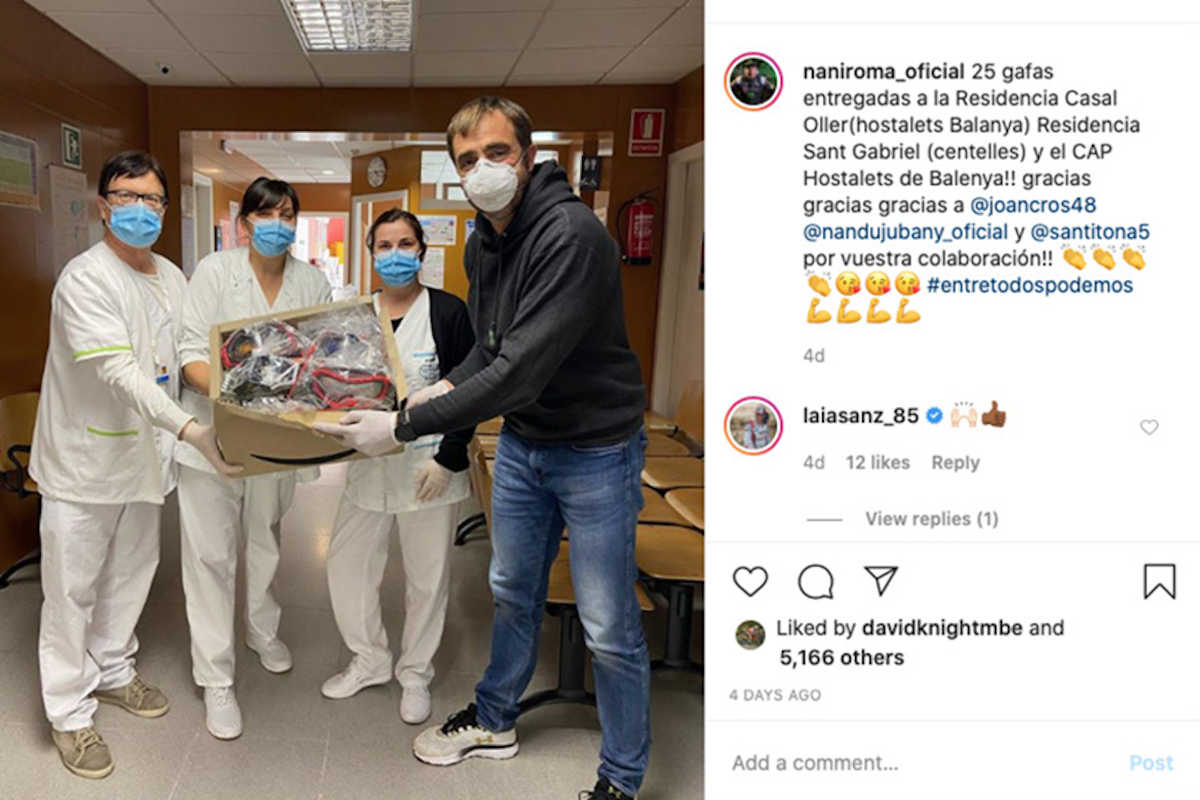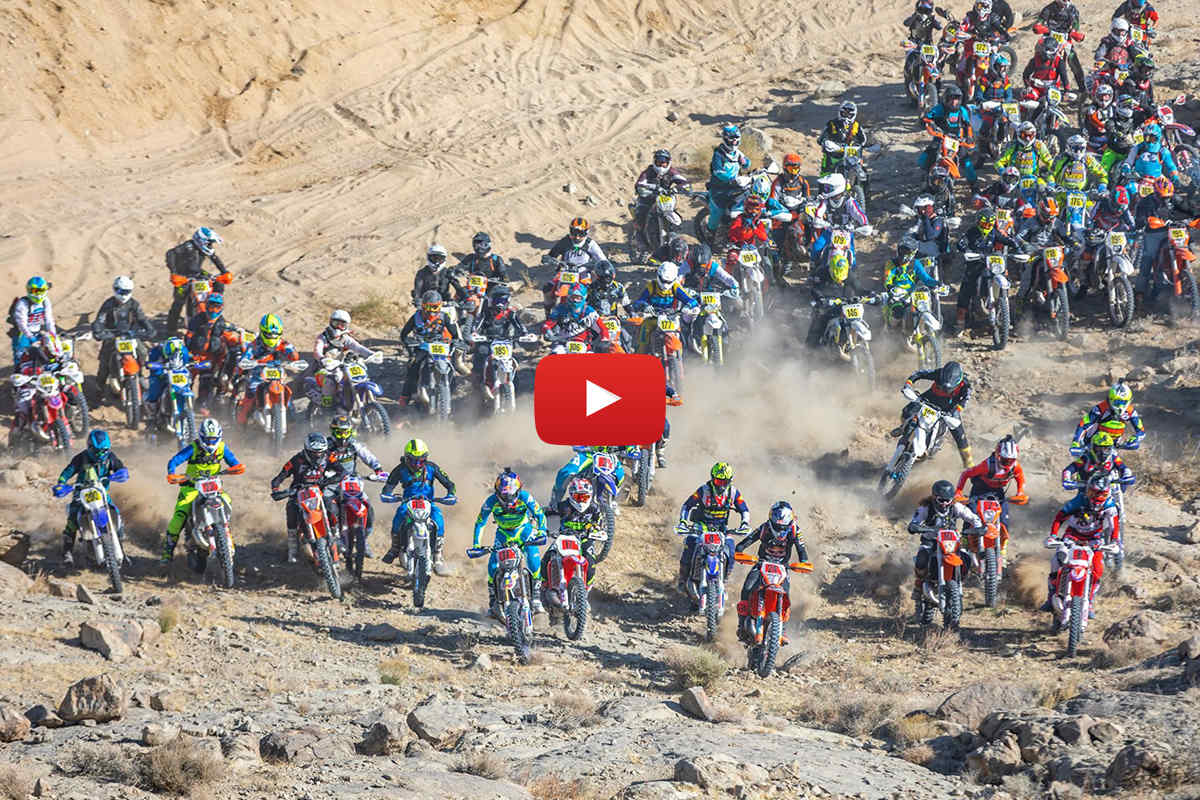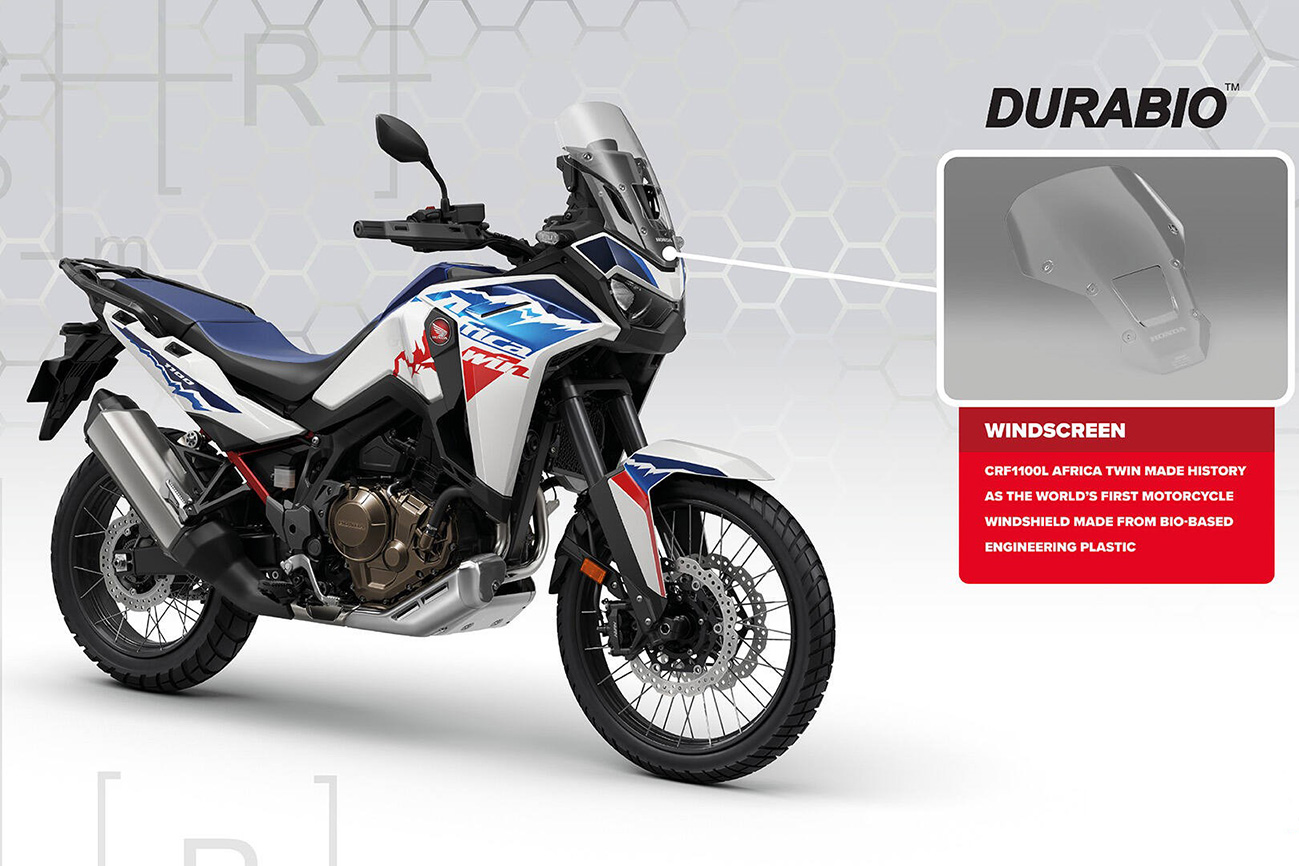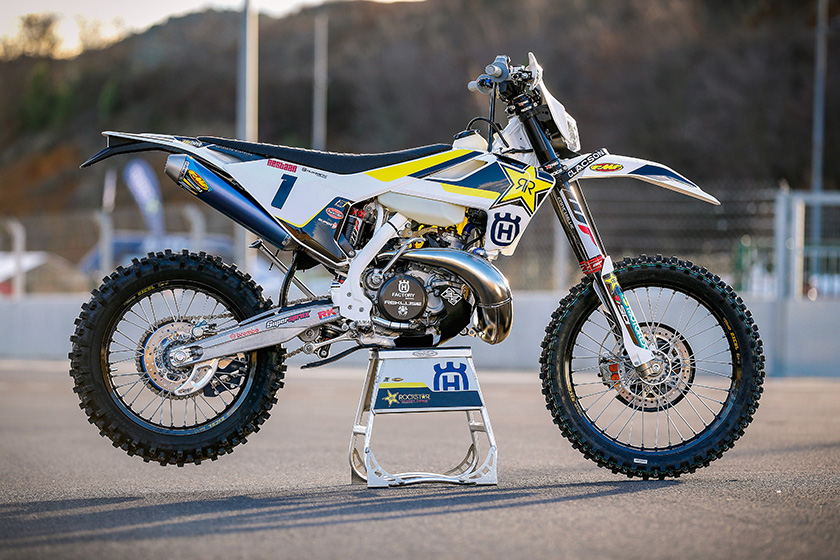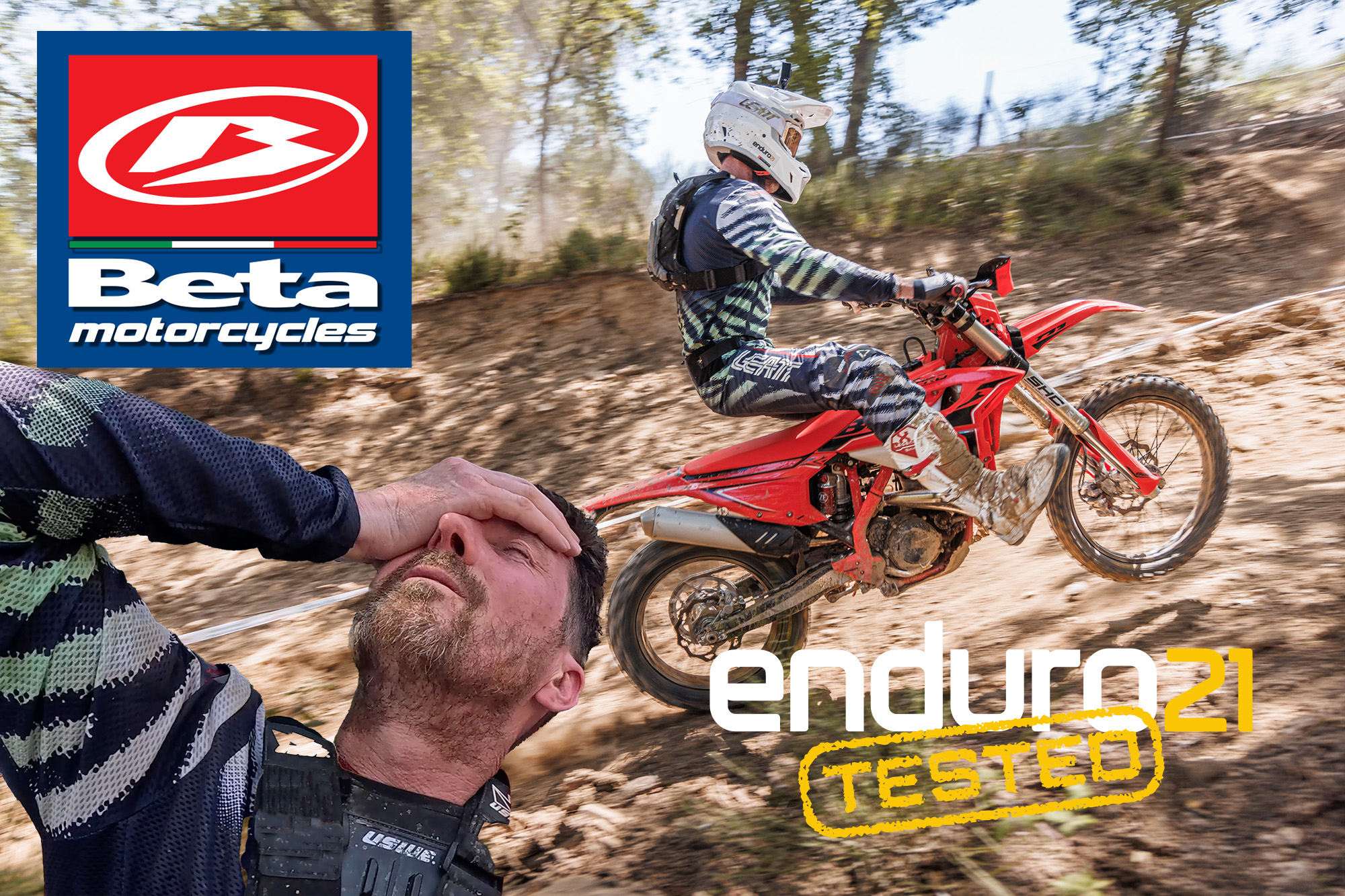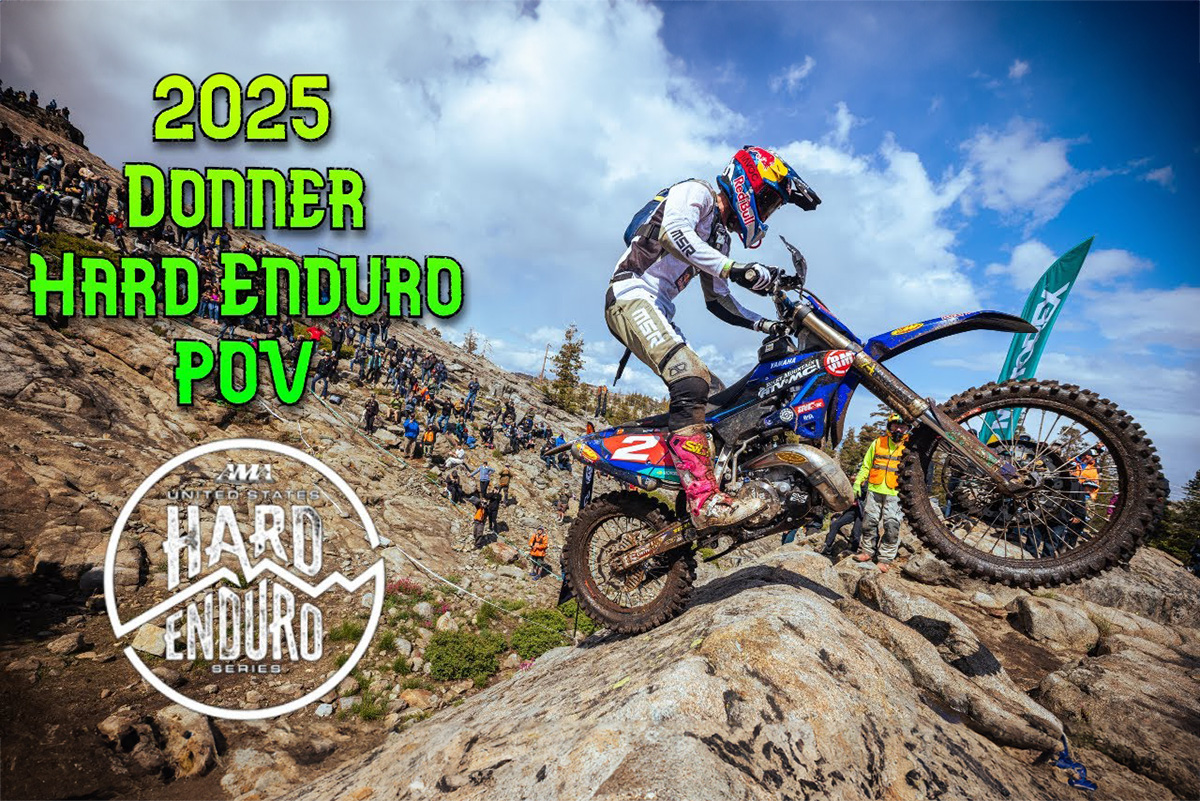Why off-road bikes need chain lube
Inspired by Enduro21 readers, we dug deeper into the science, physics and practical reasons behind why we use chain lube on our dirt bikes. From what it does to what not to use, and what is best practice when it comes to chain care?
The longer you’ve been around riding off-road, the longer the list of practical knowledge (and war stories!) you’ll have in your back pocket. Someone didn’t do X up properly, that time you spotted another rider doing something which looked like a smart idea or the lesson your dad taught you when you were a kid…it’s called experience.
The internet is full of “experienced” people telling you what to do with every nut and bolt on an enduro bike. When Enduro21 posted a story about a new chain which the manufacturer claimed didn’t need lubrication, it sparked a good debate peppered with “experience”. Some good, some bad...
Q1. Why should we use chain lube at all?
A story about a chain which the manufacturer claimed needed no lubrication sparked a lot of debate from Enduro21 readers on our social media. There’s a lot of experience out there but it different opinions inspired us to ask the experts for the truth about chain oil does and why we should use it.
Those experts are Motorex Oils and Renthal, both trusted manufacturers of motorcycle oil and components respectively which are being used all over the globe, in all kinds of riding conditions and by all kinds of riders.
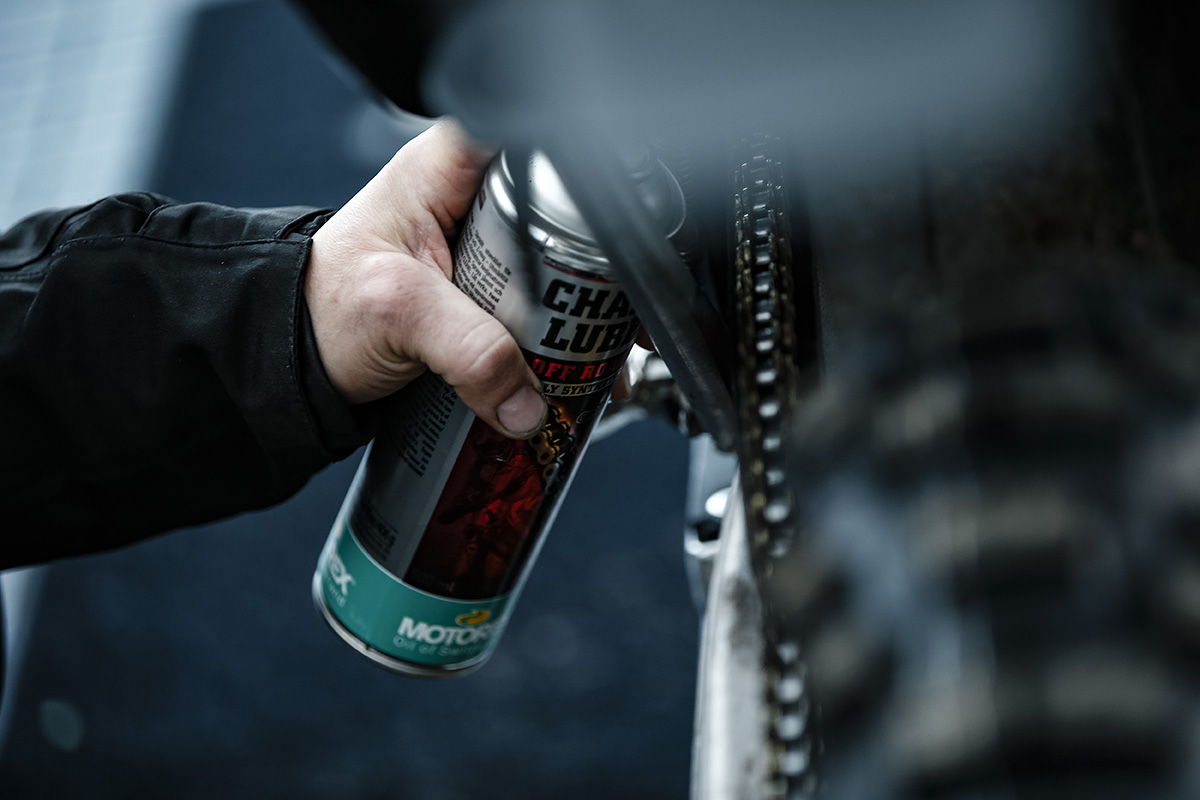
So why should we use chain lube? To reduce chain wear and friction to optimise power transfer to the back wheel Motorex explain. Aside from that, lube also helps to protect components, prevents steel parts from oxidation and preserves the rubber seals if you’re using an o-ring chain.
Renthal add lube is fundamental to avoid wear on the pin-bushing contact areas and to prevent chain stretch. Lubrication on rollers also prevents wear between bushings, rollers, and between rollers and sprocket teeth.
O-ring chains arrive with factory grease sealed between pin and bushing by rubber seals but re-lubrication is still needed to prevent wear between bushings and rollers, as well as between rollers and sprocket teeth.
The seals need lubrication as well to prevent the rubber from becoming dry, brittle and failing.
Q2. Which lube works best?
This heavily depends on type of riding and prevailing conditions but also the chain lube and bike itself. For example, some lubes are developed specifically for types of riding and/or bikes – dirt bikes, adventure, road racing or street bikes.
Both Motorex and Renthal recommend using high quality products specific for each application (road, off-road etc). They would of course, both sell high quality products designed specifically for this purpose. But from a dirt bike perspective the reason is absolutely because they are designed to work in off-road riding conditions.
Compatibility with rubber seals is important too if you’re using an o-ring chain and it must be specified on product for use on o-ring chains in order to prevent seal damage and failure.
Q3. Why can’t we just use water dispersant spray or gearbox oil?
The answers are simple according to Motorex who say thin oil of any type will fling off, doesn’t penetrate, isn’t adhesive and quickly disperses. Solvents present in some water-dispersant sprays can also harm rubber in an o-ring chain too.
Different types of sprays or oils are only designed to do what they say on the tin. Water dispersant for example offers corrosion protection not lubrication. Without the lube element in the oil you also get higher wear and power loss due to higher friction.
Renthal add that using any thin oil (some people use gear or engine oil on chains) does not guarantee the correct lubrication and adhesive property to stick to the chain.
It is better than nothing but not a patch on the real thing because chains generate heat by friction and centrifugal forces will basically blow any thin oil away (and makes a bloody mess all over you back wheel).

Q4. Does lubing a chain help with wear rate and chain life?
Quality chain lube and good chain care (we’ll come to that below) “definitely helps chain and sprocket life” Motorex explain.
The lowest possible friction between parts, the highest efficiency and longest wear life all come from using good quality lubricant. Sprocket life is extended because of reduced friction between the chain and the sprockets.
Q5. Sticky, old stuff from the ‘80s worked, right?
Wrong. You may or may not be old enough to remember the chain lubes for 20-plus years ago but some of them were as sticky as hell and there are a few still knocking about.
A lube which is too sticky attracts the dirt and acts like grinding paste. The combination of dust and a highly adhesive chain lube could create an abrasive paste that, if not removed, leads to premature chain and sprocket wear.
Q6. Does it make any difference if you are riding dry and dusty trails or thick, wet sand?
This might seem obvious but some riding conditions, especially wet sand, will heavily affect chain life.
In dry and dusty conditions the wear rate can be less but it is deceptive and still creates an abrasive paste. If you don’t regularly remove the dirt under any riding conditions it will lead to faster chain wear and shorter life.
Renthal say that it can be deceptive in dry conditions where a chain can be having just as bad a time of it because the dust is so prevalent.
Q7. What happens if you do not use chain spray at all?
We admit this seems daft to us but some people clearly don’t take as much care of their bikes in general and ride around with bone-dry, slack chains rattling off their sprockets.
No lube means parts get hot, corrode and will start squeaking (like you can hear on many commuting bicycles on city streets) and both chain and sprockets will wear out faster. Motorex add that not using chain lube is also costing you power between clutch and rear wheel as well.
Once the factory grease on a new chain is gone, even with normal chain use, the transmission will lose efficiency, overheat, become noisy and stretch.
Any Speedway fans out there? If so you might notice they love a good spray – they’ll put it on in the pits and ride 20 metres, do a practice start and come back to their mechanic for some more. It’s all about keeping that primary drive chain as free flowing as possible and maintaining optimal power to the back wheel.
High temperature = bad
Renthal say lack of any lubrication is a big problem in terms of heat generated by the chain and that a high running temperature cause:
· Lubricant to change viscosity and easily run off the chain
· Lubricant to change its anti-wear properties
· Seals to become dry, brittle and fail (in this sequence)
· Galling into articulations
The above would cause a premature wear of the chain articulations and chain stretch.
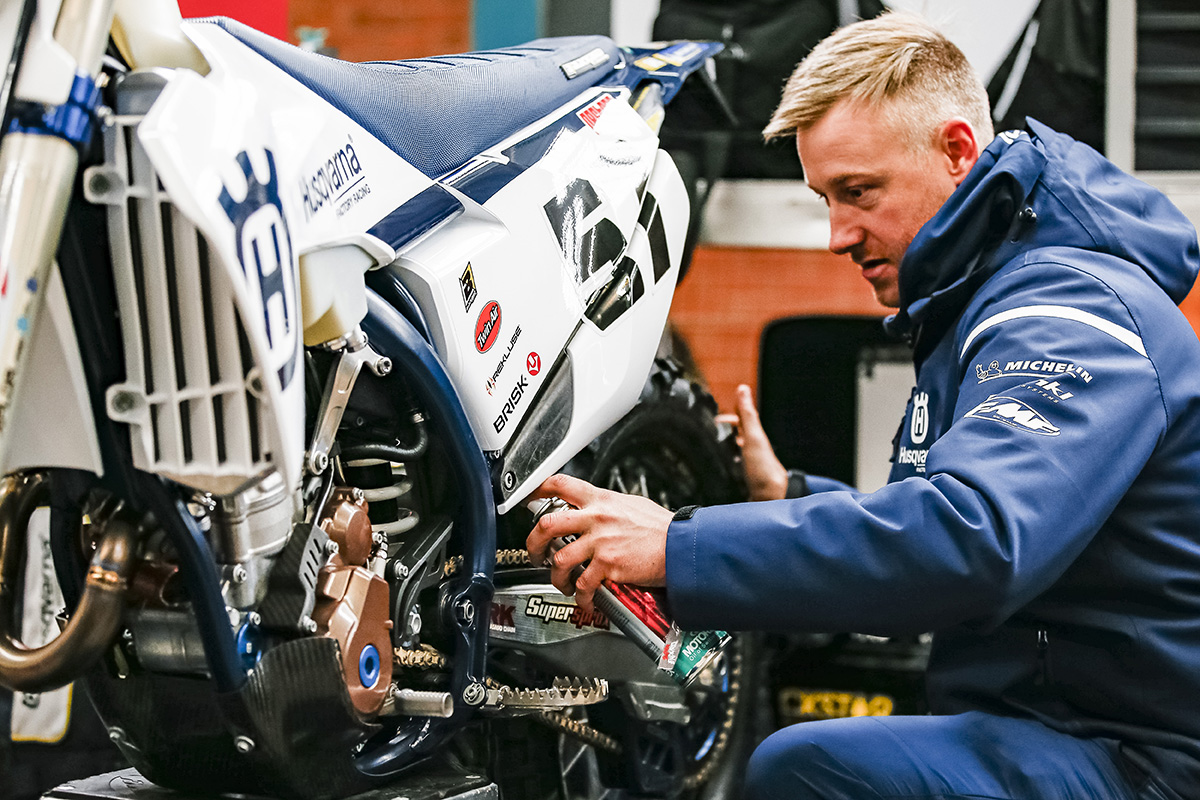
Armed with all that info, how should we look after our chains?
Clean it and lubricate properly every time you ride is the simple answer. Cleaning a chain is something perhaps not everybody bothers with enough but of all the experts we spoke to for this feature, “clean it and then lube your chain, every time” was a common reply.
For off road or enduro riding, chain cleaning is highly recommended to remove that dirt which causes the “grinding paste” effect (increasing wear) as well as helping the subsequent re-lubrication provide a better coating.
Can you jet wash a chain?
Take care when jet washing to remove mud and dirt from the chain. On non o-ring chains you can get closer with the water jet but with o-ring types, keep around 60-80cm away from the chain to prevent damage to the rubber seals.
Best practice is to wash then carefully dry it immediately with compressed air gun, blowing the water out.
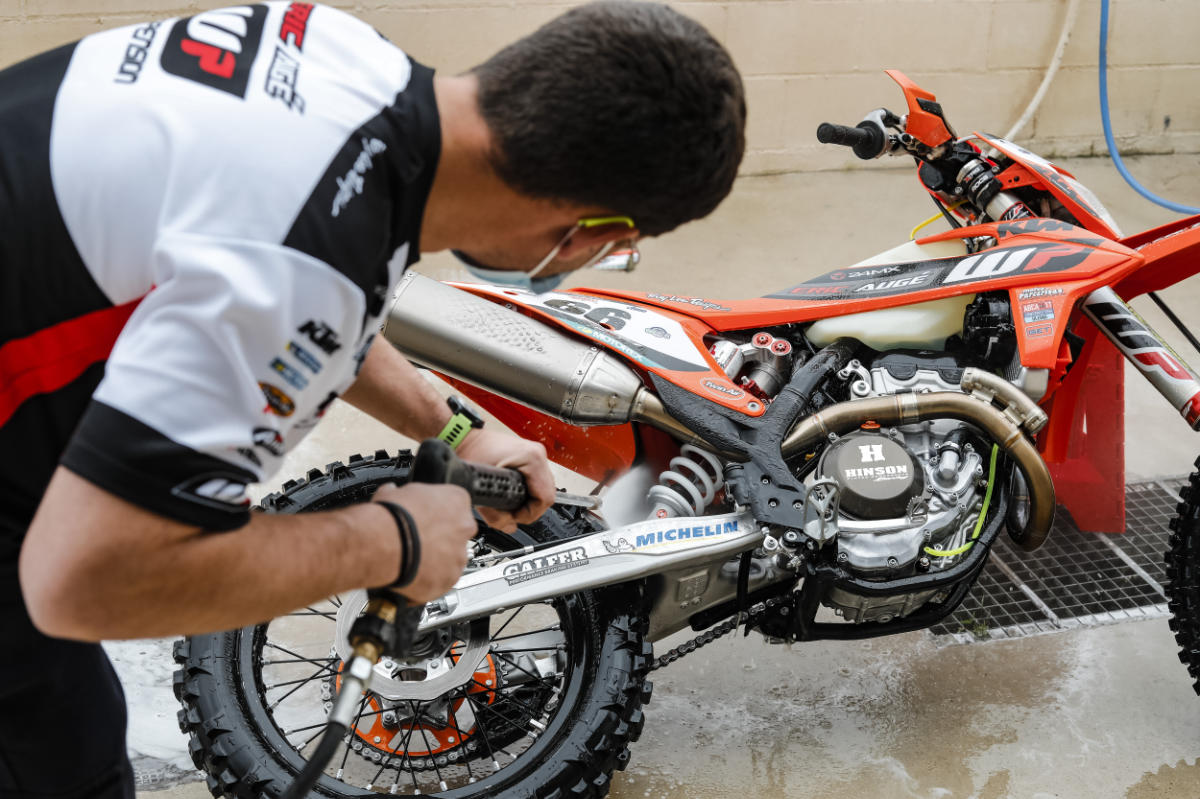
Using a chain cleaning product after jet washing is the next step to remove any dirt or old chain lube baked on (and holding the dirt). Follow instructions for the chain cleaner you’re using but be sure to use a catch tray underneath for the run-off and maybe employ a brush to improve application.
Then wipe clean, dry and free from all residues. Don’t use petrol or other solvents either to clean a chain because they will corrode the o-rings.
How to spray a chain
Right, this might seem obvious but watch 10 people in a club race paddock and you’ll see at least five different ways of spraying a chain.
Turn the rear wheel manually, spinning with one hand, spray with the other– ideally in the direction of the normal wheel travel to make sure the round edge of the split chain link is heading forwards.
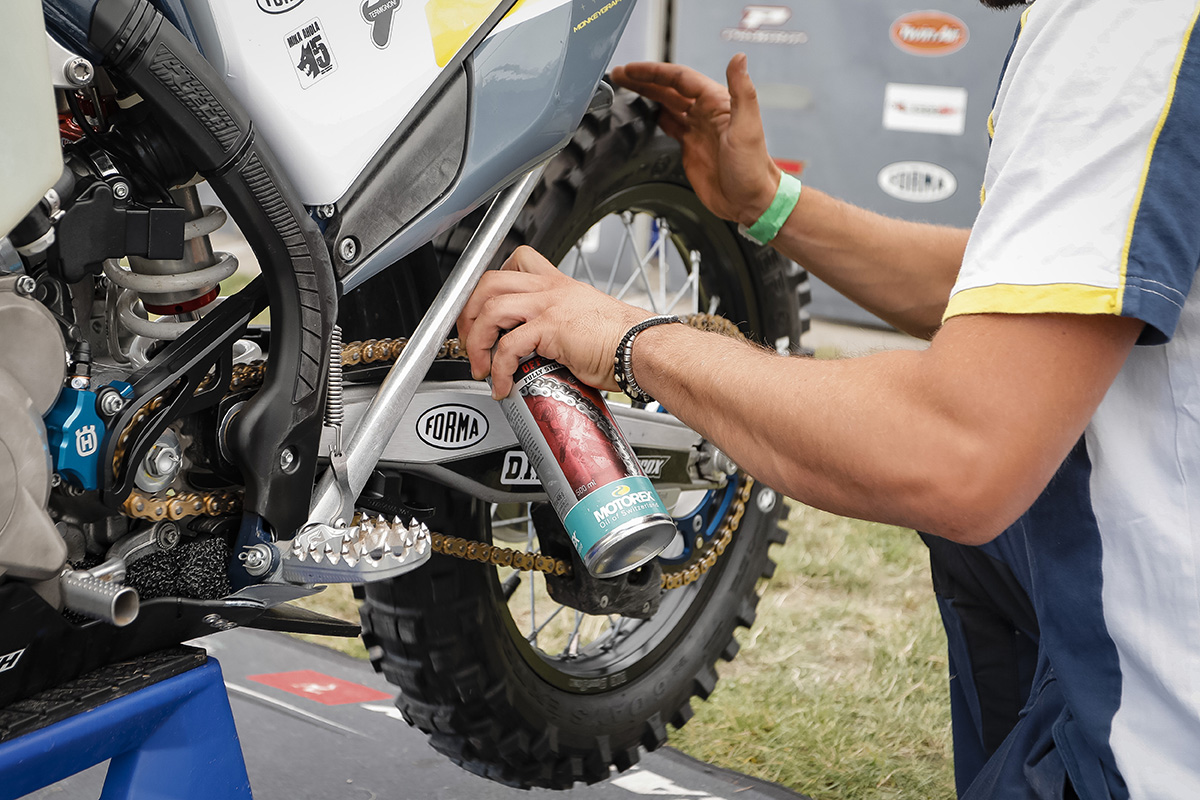
Spray between inner plates and rollers, just before the front sprocket plus between the inner and outer plates to reach the pin and bushing contact area. Don’t spray too much, it needs coating not drowning.
Turning the rear wheel helps the lubricant to penetrate the rollers and the bushings. Spraying from the top helps because, well, because of gravity.
Avoid immediate bike use to leave time for the lubricant to penetrate and the solvent to evaporate (you may have noticed most good chain lubes are thin when first sprayed but ‘set’ after a few minutes).
After a few minutes, wipe off the excess with a clean rag. Repeat this process every riding session for best results.
Photo Credit: Enduro21 + Future7Media | Andrea Belluschi + Nicki Martinez





